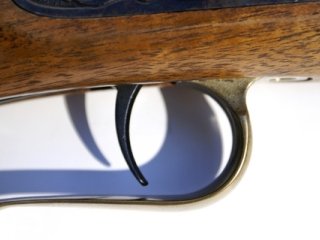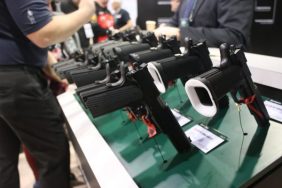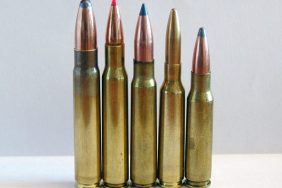 When your aim is to put two bullets through the same hole at 100 yards, you wouldn’t want someone to apply five pounds of pressure to your gun right as it goes off. That’s about what you have to do to fire a rifle with a factory trigger. Quite a bit of precision goes into putting two holes in paper within an inch at 100 yards. In the world of rifle precision, five pounds of trigger pressure is a tremendous chance to improve accuracy.
When your aim is to put two bullets through the same hole at 100 yards, you wouldn’t want someone to apply five pounds of pressure to your gun right as it goes off. That’s about what you have to do to fire a rifle with a factory trigger. Quite a bit of precision goes into putting two holes in paper within an inch at 100 yards. In the world of rifle precision, five pounds of trigger pressure is a tremendous chance to improve accuracy.
While scopes and hand loaded bullets are well within the realm of the average do it yourself rifleman, trigger jobs and new barrel work fall within the realm of gunsmiths. Don’t attempt to do this work without proper training, tools and know how. I know of several disasters that almost led to death.
Custom triggers professionally installed are very safe. However don’t forget that a light trigger pull will now make the gun go off. Safety is before all else in gun handling and adjusting.
Big props to Savage and their factory installed accu-trigger tm. Hopefully several other manufacturers will follow on this trend in accuracy improvement. True custom triggers will run a couple hundred dollars and are manufactured only for guns that are popular to customize. The Remington 700 tends to be a favorite for custom gun building.
Jewell custom triggers are adjustable from an amazingly light 1.5 ounces up through 7lbs depending on the model. Most custom triggers for hunting are set around 2.5 lbs to 3.lbs of pull. Target rifle triggers may be set much lighter. The 2 lb difference in pull may seem nominal on paper, but in practice it will surprise you. The difference is clearly discernable. Trigger pull should give some resistance, yet the trigger should fire the rifle with minimal effect on the aiming point.
Unless you have already, talk with your gun smith and fellow shooters to determine which trigger is right for you. A clean pulling, lighter breaking trigger can make a big difference in accuracy when paired with the other elements of accuracy.








